#Chinese violet cress
Text

オオアラセイトウ/諸葛菜/ムラサキハナナが咲いている(3月8日)
Chinese violet cress (Orychophragmus violaceus)
5 notes
·
View notes
Text
So i am embarrassed to admit I don't think I ever beat Wild Arms 3 properly... I thought I had but while digging thru peoples LPs I realized the final couple stages of WA3's final boss fight seemed really unfamiliar to me, although I do distinctly remember the end cutscene.
But other than being a really thematically cool marathon boss fight where you have to literally fight back the evolution of a hostile alternate reality, the final form of the final boss summons up 4 very conspicuously named and partially mistranslated tentacles in sequence. (unless you kill the boss before it can do that...) And they're all named after a different genus of flower.

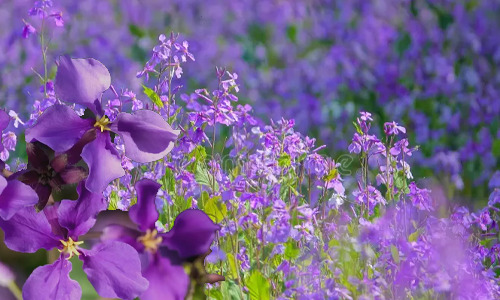
Orychophragmus really only accounts for Orychophragmus violaceus, the Chinese Violet Cress, which is mostly ornamental, and considered an invasive species in Japan. (it is apparently farmed as a crop in its native china, for seeds used to press vegetable oil, like canola. but as far as i know it's introduction to Japan and the US was only for aesthetic purposes.)


Matricaria is a genus of Chamomile, again commonly farmed as commercial chamomile. It's a part of the daisy family, and daisies are the basis of the Tiny Flower item featured throughout the Wild Arms series.

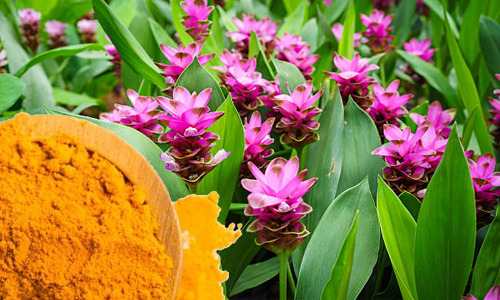
Carcuma is the genus of "Hidden-lily" plants, which includes commonly farmed tumeric. It is a subset of the ginger family
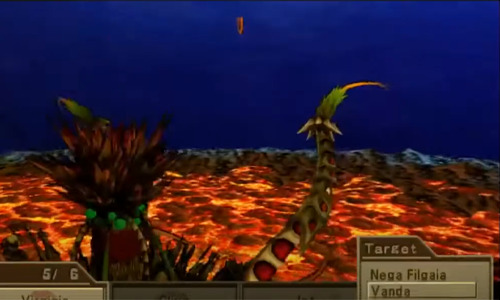

and finally the genus Vanda is a subset of orchids known for particularly vibrant flowers, and the subject of conservationist efforts, as they are quickly losing their natural habitats.
Anyway that's your random Wild Arms boss factoid for the day. Now if you'll excuse me, it's back to the screencap mines for me.👷⛏️
10 notes
·
View notes
Text
Flora, Fauna, and Environment of Neldoreth (Updated and Added To)
,Flora, fauna, environment/geography of Arda
I did Region here!
Originally requested by @actuallyfingolfin
I did try to organize these more into sections of the forest (openings and glades, margins and edges, moist or shaded soil, etc) and I don’t know if it will be of interest to anyone else but if anyone is interested in sending me a section of a habitat or location for me to elaborate on I will. Or a season!
I put a lot of work into this!
Neldoreth is a forest of beech trees, part of Northern Doriath and contained within Melian’s Girdle. It was here that L��thien was born and later imprisoned to prevent her from rescuing Beren. It was bordered by the River Esgalduin on the South towards the Northeast and and River Mindeb on the West, both tributaries to Sirion. The tallest beech tree in the forest was Hírilorn and it was here that Lúthien was imprisoned.
Doriath has three forests making up its kingdom; Neldoreth, Nivrim, a small forest of mostly oak trees West of Sirion and Region, in Southern Doriath, a forest of mostly holly where Menengroth was located.
I’ve been thinking a lot about potential biomes ecoregions for Beleriand and the other realms. Ecoregions are patterns of ecologically and geographically defined regions. A comparable biome are temperate broadleaf and mixed forests with English lowlands beech forests being a potential ecoregion.
I also have specific headcanons mentioned here about far Eastern Doriath closer to the river Celon which I will talk about when I do far Eastern Doriath and the lands North of Iant Iaur. These are closer to North Atlantic moist forests and even humid mixed forests.
Neldoreth is a lush, deciduous forest with moderate to heavy rainfall depending on the season. Snowfall is rare.
There are a number of genuses directly referenced in canon in relation to Neldoreth; beech, chestnuts, oak, elm, hemlock, species of fern, grasses, the flower Niphredel which was a creation of Tolkien himself but inspired by snowdrops (though having more petals creating a star like flower) and the white field rose.
The beech trees were likely a combination of European, Chinese and Japanese blue beech and dwarf beech with other trees dotting the boundaries and occasionally mixing with the beeches in groves throughout Neldoreth. These include common ash, common hornbeam, sycamore, sessile oak, common oak, fluttering elm and horse chestnuts.
The forest floor is covered in ferns such as alpine lady fern, bracken, hay scented fern, hard fern, hart tongue fern and mountain wood fern as well as common aloe moss, bog groove moss, red bog moss and more . There are also grassy groves and openings such as those mentioned in the Lay of Leithian. It is possible these were created through the magic of Melian. Woodland opening and transitional habitats are particularly interesting to me. Woodreeds are one possible example.
Spindle, nettle leaved bellflower, bitter vetch, grow on the Western edges of the forest South of Mindeb
Bluebells,, wood anemone, primrose, dog’s mercury, yellow archangle, snow drops, yellow wood violet, wood sorrel, greater starwort, and enchanter’s nightshade are a small selection of flowering plants.
As I said, send a section of the forest or a season and I can go into more detail!
Large bitter cress, water aven, flag lilies, purple marshlocks, common stinging nettles wild parsnip, wild thyme, marsh ragwort and brooklime (among many others, see below) grow in abundance by the banks of Esgalduin and smaller tributary streams.
Barnacle and beard lichens, script lichen, beechwood sickener, earthstar, common bird’s nest fungus, inkcap, fly agaric, yellow brain and velvet shank are a selection of the fungi and lichens that can be found in Neldoreth.
As a number of butterflies feed upon beeches and the other trees common to Neldoreth, Neldoreth is home to a variety of butterflies and moths. Large and light emeralds, winter moths, purple shot copper, cherry bark moth, mourning cloak, wood white, large tortoiseshell, wall brown olive skipper, common blue as well as gothic, ghost, silver ground carpet, dot and poison hemlock moths
There are also a variety of beetles, bees, and praying mantis like insects. (Insect species are so numerous it’s hard to given even a small sample but I’m always happy to make specific posts about insects or any other category of a place)
Bumblebees including tree bumblebees, pollen beetles such as in the genus Meligethes, violet click beetles, oak and speckled bush crickets, rose chafer, hawthorn shieldbug, and biolumenescent fungus gnats (I talked in my post about Western Beleriand about this but while biolumenescnese is more common elsewhere in Beleriand, there are a few biolumenescent species in Menengroth and the woods of Doriath.
Lemon slugs and white lipped snail can also be found and I was talking with @tol-himling about the possibility of stranger species of gastropod being possibly brought over or arriving with Melian.
Birds live by the banks of Esgalduin and throughout the woods itself. White throated dipper, garden and willow warblers, song thrush, common nightingale, nuthatch, gray headed woodpecker, white backed woodpecker, black woodpecker, little bunting, indigo bunting, song sparrow, wood duck and shovelers being some examples.
I also headcanon that there are prehistoric (from today’s perspective) species of birds including small, brightly colored flightless birds that nest in the ferns and glades of the forest.
Palmate newts, great crested newts, agile frogs, moor frogs and small tree frogs are found in vernal streams branching from Esgalduin and Mindeb with agile frogs and dark gray and green toads living away from the water in undergrowth for much of the year.
Neldoreth doesn’t have many larger mammals but there are Chital, water deer and barking deer like species, stoats and lesser weasels, reed vole, water shrews, bush dogs, hedgehogs (mostly European but others too), and flying squirrels (among others)
Dormice especially hazel dormice and grass snake (obviously these are different kinds of animals but I grouped them together because of their habitat) on the margins and towards the river.
I do think in other places of Doriath there are giant elk that do occasionally travel through Neldoreth. There are other species that do not exist today, I mentioned tapir like creatures as well as saber toothed cats (though these are found mostly to the wild and dangerous North of Neldoreth, North of Iant Iaur) and other stranger creatures (I’d be happy to share some headcanons on non existent species or more speculative ecology if anyone wants!)
Esgalduin, the river that runs through Doriath dividing Neldoreth from Region, North to South, is an ecosystem and habitat in itself. If there’s interest I’d love to do a post specifically about it so I don’t over condense here?
But there are a variety of aquatic plants, fish and other creatures there.
As always, requests and asks are open and welcome!
34 notes
·
View notes
Photo
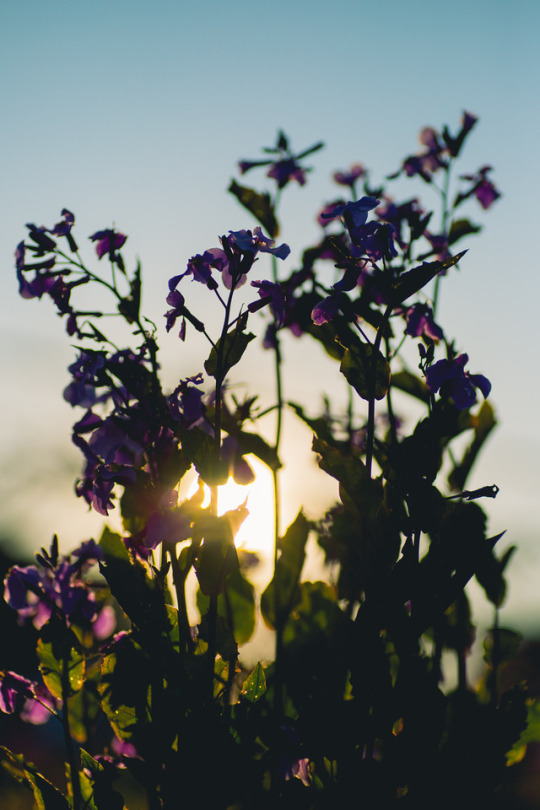
31 notes
·
View notes
Photo

Garden/ Violet cress
ムラサキハナナ
56 notes
·
View notes
Text
Tagged by @akesari-fr @gemmieurts @sunglasslibrary
you guys have no mercy
Rules: answer 20 questions so your followers can get to know you better, and tag 20 other people you’d like to know better.
name: Churyu
nickname: Chu, Cress
zodiac sign: ROAR
height: UHHhh 160cm??
languages spoken: english, chinese and half-bucket malay.
nationality: Chinese
favourite fruit: every 👏 fruits 👏 i 👏 like👏👏👏
favourite season: I LOVE SUMMER. i used to say i like winter until i experienced it.
favourite scent: Hhhh i dont know??? I dont like sweet sweet sweet perfume that you can taste?
favourite colour: Blue!! Pastels?!? Lime green
favourite animal: a l l
favourite fictional character: nani. are you making me choose!!! i have a favourite each from every anime!! violet evergarden 👏👏
coffee, tea, or hot chocolate: TEAA!!! But i love all!
number of blankets you sleep with: THREE if i can
when was your blog created: i.. i dont know. i still have the old tumblr version of notes. I think it was 2012???
favourite subject: HHhhh math???? ( if i could get it and do it HAHAHA ) but i love philosophy it was great.
currently watching: Cells at work!
stopped watching by accident and need to finish soon what are you doing: never! procrastination is the king!!
favourite band: hhhh no favourite band. I’m open to anything. But I’m currently listening to utaites!!
instruments played: drawing tablet im sure it counts
favourite book: HHhh sarah j maas books!! Children of blood and bone
ok here we go
@soraiko @tiriea-rising @kyuukancorbie @meesefr
5 notes
·
View notes
Text
Character Description
Name: ᠴᠠᠭᠠᠨ /Culuu (means Stone, and not known until mid-story)
Nickname: ᠣᠳᠤ/ Od, Star,
Alternate identity:
Birthday: August 2, 1249.
Zodiac:
Birthplace: Khangai Mountains
Dwelling place: Karakorum (as teen), Khanbaliq/Dadu (as adult). Ulaanbaatar then Texas (modern day)
How do they live: With father, preparing and going to war.
Modern - Alone or with friends, attempting to return home at first, then settled down for life in modern day.
Appearance: Normal historical Mongolian clothing, usually brown in colour. Mid-back long braided hair, full beard/moustache
Modern - t-shirts, shorts, earring, bracelets. Shoulder length hair or in manbun, short trimmed beard, glasses.
What’s in their bag/pockets: Bow/Arrow, Sword.
Species: Human
Features of the species:
Name of parents: Mod/ᠮᠣᠳᠤ (meaning tree). Mother unwritten.
Name of siblings: none
Others next of kin:
Not-in-blood-but-in-bond-family:
Family history: His father, Mod, is the fictional adopted son of the historical general Jebe.
Favourite colour: white, black, red
Favourite animal: horse
Favourite book: anything that portrays his family/Mongol Empire
Favourite film/show/series: anything that portrays his family/Mongol Empire, Arrow.
Favourite genre:
Favourite food:
Favourite place to be: Back home at war, on the grasslands practising martial arts/archery.
Modern - Practicing martial arts/archery at a horse ranch, in his bed/couch reading historical texts, watching historical movies/tv.
Personality: Strong-willed, stubborn, doesn’t take no for an answer, keeps promises, dedicated, occasionally distressed or moody due to being unable to return home, stupid at romantic gestures,
Misc: Speaks Mongolian then learned Chinese. Learned English in modern day. He’s an archer but highly prefers traditional Mongolian archery, does not actually use modern bows, etc, no matter what he watches. Story plot - disappeared in middle of battle in Xiangyang 1272 to modern day Mongolia.
______
Hi C!
Another Friday, another character – here we go! I hope you'll find this useful!
Name: Culuu (means Stone)
There is a plant called Lithops, also known as living stone because it well, looks like a stone. It doesn't have any meaning though.
stonecrop – tranquillity
alyssum (sweet) – worth beyond beauty // known as Steinkraut in German, translates to stone weed more or less
Nickname: Star
star of bethlehem – reconciliation, purity, idleness, let us follow Jesus, atonement
starwort – afterthought
starwort (american) – welcome, welcome fair stranger, cheerfulness in old age
Khangai Mountains
ash mountain – prudence, with me you are safe
laurel (mountain) – ambition
pink (mountain) – aspiring, you are aspiring
rowan tree – talisman // also known as mountain ash
preparing and going to war
achillea millefolia – war
goosefoot (grass-leaved) – I declare war against you
indian cress – warlike trophy, resignation
milfoil – war
myrtle (wax) – discipline, instruction
nasturtium – a warlike trophy, patriotism, resignation, conquest, victory in battle
rhubarb – advice
ruellia – fortitude
tansy – I declare war against you, resistance
thorn's (branch of) – severity, rigour
yarrow – war, to cure, a cure for the heartache, cure for a broken heart, cure for heartache
Dwelling place: Texas (modern day)
The state flower of Texas is the bluebonnet.
Name of parents: Mod (meaning tree)
almond tree – indiscretion, thoughtlessness, stupidity
ash tree – grandeur
bay tree – glory
birch tree – gracefulness, meekness
bladder nut tree – frivolous amusement, frivolity, amusement
chaste tree – coldness
cherry tree (white) – deception
hand flower tree – warning
judas tree – unbelief, betrayal
linden tree – conjugal love
locust tree – vicissitude, elegance
locust tree (green) – affection beyond the grave
lote tree – concord
nettle tree – conceit
orange tree – generosity
pear tree – comfort
plane tree – genius
plum tree – keep your promises, fidelity
prune-tree – promise
rowan tree – talisman
service tree – prudence
spindle tree – your charms are engraven on/traced upon my heart
strawberry tree – esteem and love, esteem not love, perseverance
tree of life – immortality, old age
tree primrose – inconstancy
tulip tree – rural happiness
yew tree – sorrow, sadness
Favourite colour: white, red
acacia (white) – elegance
balsam (red) – impatient resolve, touch me not
bay (red) – love's memory
bellflower (small, white) – gratitude
bindweed (white) – humility
camellia (red) – unpretending excellence, you're a flame in my heart
camellia (white) – perfected loveliness, adoration
carnation (red) – my heart breaks, my heart aches for you, admiration
carnation (white) – sweet and lovely, innocence, pure love, woman's good luck gift
catchfly (red) – I fall victim, youthful love
catchfly (white) – betrayal, I fall into the trap laid for me
chrysanthemum (red) – I love
chrysanthemum (white) – truth
clover (red) – industry
clover (white) – think of me
columbine (red) – anxious and trembling
daisies (wreath of white) – I will think of it
daisy (red) – beauty unknown to possessor
daisy (white) – innocence
dittany (white) – fire, passion
heather (white) – good luck, protection, wishes will come true
hollyhock (white) – female ambition
hyacinth (red) – playful joy
hyacinth (white) – unobtrusive loveliness, beauty, I'll pray for you
ivy (sprig of white tendrils) – assiduous to please, anxious to please, affection
jasmine (white) – amiability
julienne (white) – despair not, God is everywhere
lilac (white) – youth, youthful innocence,
lily (white) – purity, sweetness, virginity, majesty, it's heavenly to be with you
mulberry (red) – wisdom
mulberry (white) – wisdom, prudence
oak (white) – independence
periwinkle (white) – pleasing remembrances, pleasure of memory
pink (red, double) – pure and ardent love, woman's love
pink (white) – ingeniousness, talent, lovely and pure affection
pimpernel (red) – appointment
poplar (white) – time
poppy (red) – consolation
poppy (white) – my bane! my antidote!, dormant affection, sleep my bane, sleep my heart, consolation
primrose (red) – unpatronised merit
red valerian – readiness
rose (deep red) – bashful shame
rose (red) – beauty, love, I love you, respect
rose (red-leaved) – diffidence
rose (white) – I am worthy of you, silence, too young to love, I would be single, a heart unacquainted with love, innocence, purity, secrecy
rose (white and red together) – unity
rose (white, withered) – transient impressions, death is preferable to loss of virtue
rosebud (red) – you are young and beautiful, pure and lovely
rosebud (white) – a heart that is ignorant of love, heart unacquainted with love, the heart that knows not love, girlhood
salvia (red) – energy
sultan (white) – sweetness
tulip (red) – declaration of love, believe me
valerian (red) – facility
verbena (white) – pray for me
violet (white) – candour, let's take a chance on happiness
water lily (white) – eloquence, purity, purity of heart
zinnia (white) – goodness
Favourite place: grasslands
canary grass – perseverance
citronella (lemon grass) – homosexual love
foxtail grass – sporting
grass – submission, utility
grass (quaking) – frivolity
grass (vernal) – poor but happy
quaking grass – agitation
rye grass – changeable disposition
scorpion grass (mouse-eared) – forget me not
Based on personality
alstroemeria – devotion
bay leaf – I change but in death/dying
columbine (purple) – resolved to win
cudweed (american) – unceasing remembrance
euphorbia – persistence
geranium (horseshoe-leaf) – stupidity
geranium (night-smelling) – melancholy spirit
geranium (sorrowful) – melancholy mind
gilliflower (mahon) – promptness
heliotrope – devotion, devoted attachment, I love you, intoxicated with pleasure, the intoxication of love, infatuation, faithfulness
hepatica – confidence, truth
honeysuckle – devotion, I would not answer hastily, generous and devoted affection, bonds of love, fidelity, affection, the bond of love
larch – boldness, audacity
lavender – devotion, love, mistrust, distrust, acknowledgement
lychnis – devotion, religious enthusiasm
nuts – stupidity
plum tree – keep your promises, fidelity
polyanthus – confidence, pride of riches
poplar (black) – courage
withy – frankness
zinnia (mixed) – thinking about an absent friend
Misc
fir – time, elevation
heath – solitude
imbricata – uprightness, sentiments of honour
laurel – glory, treachery, virtue is beauty, glory and success
lint – I feel my obligations
magnolia – love of nature
mandevilla crassinoda – you are too bold
pine – time and faith, boldness, pity, daring, hope
poor robin – compensation or an equivalent
syphocampilus – resolved to be noticed
spiderwort (virginian) – momentary happiness
Everything we've got in the Chinese flower language tag for a start.
- Mod Jana
Disclaimer
This blog is intended as writing advice only. This blog and its mods are not responsible for accidents, injuries or other consequences of using this advice for real world situations or in any way that said advice was not intended.
22 notes
·
View notes
Text
This Purple Plant Has a Secret That Could Replace Synthetic Engine Oil: The Chinese violet cress has been hiding a never-before-discovered fatty acid that could be a near-perfect lubricant.

Original post | Reddit thread
1 note
·
View note
Text
I spent two hours giving characters from Lazarus verse symbolic flowers. Under the cut bc It’s Kinda Long.
Meanings range from their modern interpretations to some Victorian age ones. They also might not be exactly correct; I did a method of ‘pick and choose’ from across the results searching the web gave me.
Lazarus: Red poppy (pleasure/sacrifice/remembrance), purple carnation (capriciousness, whimsical, changeable, unreliability), blue hyacinth (ignoring specific meaning of the flower, taking the general meaning of hyacinths which is games, rashness, rebirth)
Kelly: Liverwort (confidence), eldelweiss (daring, courage, noble purity), phlox (unity)
Martinez: elder flower (zeal), red hyacinth (playful), crocus (youthful gladness, cheerfulness)
Vinson: cherry blossom (gentleness, kindness), alstroemeria (commitment and care), white chrysanthemums (truth)
Carter: Red columbine (anxious), oleander (cautious), yarrow (healing)
Getman: Nasturtium (patriotism, conquest, victory in battle), dogwood (durability), Zinnia (thoughts of friends)
Jones: purple columbine (resolved to win), anemone (forsaken, expectations), red spider (death, reincarnation, lost memory)
The HOD: Laurel (ambition, success, renown), lavender (devotion, distrust), dahlia (divinity and elegance)
Miller: Rosemary (remembrance), rue (regret/sorrow/repentance), heather (solitude)
Peterson: red clover (industry), sweet violet (modesty), iris (inspiration)
Smith: Rhododendron (beware, dangerous), black rose (death, farewell, elusive), carmine rose (deceitful desire)
Harley: delphinium (big hearted, rash, bold), Chinese pink (perseverance), oats (music)
Volya: oak (liberty), osier (frankness), pine (time will cure)
Barker: Fraxinella (fire), tansy (declaration of war), yellow violet (rural happiness)
Danielle: flowering almond (hope), mountain ash (safety), clinquefoil (maternal affection)
Baker: Cress (stability), broom (humility, neatness), coral trees (pride)
Alicia: holly (domestic happiness), white hyacinth (unobtrusive loveliness), lotus (eloquence)
Yvonne: Aconium Napellus (enemy in disguise), African marigold (cruelty), scotch thistle (retaliation)
Yao: Ivy (endurance, dependance, faithful), blue violet (watchful, faithful), myrtle (love, home, duty)
Fang: Pine (hope, pity), petunia (resentment, anger), dracaena (inner power)
Geming: oak leaves (bravery), sycamore (curiosity), walnut (stratagem)
Valkyrie 1 (the young woman): Fennel (strength), black eyed Susan (justice), birds foot trefoil (revenge)
Valkyrie 2 (the young man): hollyhock (ambition), oxlips (pensiveness), wild plum (independence)
Valkyrie 3 (the old woman): Hazel (wisdom), pear tree (affection, comfort), acacia blossom (beauty in retirement)
Valkyrie 4 (the old man): blue rose (impossible, unattainable), fish geranium (disappointed expectations), protea king (change, transformation)
Valkyrie 5 (the child): fern (fascination, magic, sincerity), primrose (youth), lilac (memories, innocence)
1 note
·
View note
Photo


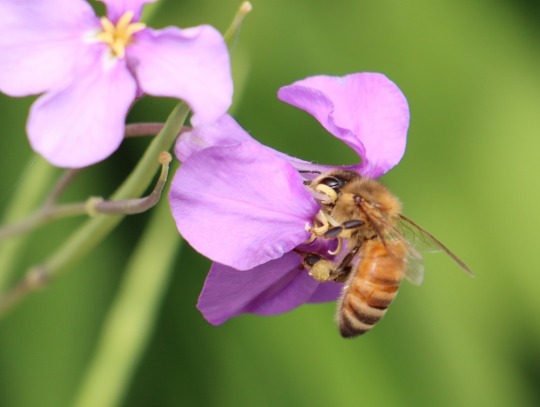
オオアラセイトウ(諸葛菜)で吸蜜するセイヨウミツバチ(4月14日)
#Apis mellifera#western honey bee#European honey bee#honey bee#pszczoła miodna#pszczoła#Orychophragmus violaceus#Chinese violet cress#insects#owady#flowers#kwiaty#japan
3 notes
·
View notes
Text
Nutrition
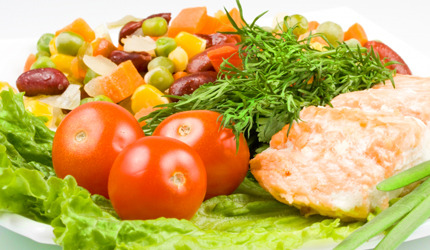
Upgrade nutrition content in your diet.
Our personal trainers in London will help you to analyse and upgrade nutrition content in your diet. To ensure that you’re getting the most nutrients in your diet eat a rainbow pick a variety of colours:
Red foods: red apple varieties, strawberries, peaches, cherries, raspberries, cranberries, strawberries, red cherries, red grapes, pomegranates, red plums, rhubarb, pink grapefruit, watermelon, guava, tomatoes, red peppers, radishes, radicchio and red onions.
Orange and Yellow foods: apricots, bell peppers, cantaloupe melon, carrots, mangoes, nectarines, organic potato, peaches, papaya, pumpkin, lemons, oranges, satsumas, sweet potato, grapefruit, pineapple, galia melon, passion fruit, , swede, sweet potatoes, butternut squash, orange peppers, sweetcorn.
Green Foods: Asparagus, avocado, broccoli, Brussels sprouts, Chinese leaf, courgette, cress, cucumber, rocket, spinach, lettuce, watercress, leafy cabbage, pak choi, spring greens, green beans, peas, sugar snap peas, mange tout, green pepper, spring onions, leeks, green apples and grapes, kiwi fruit.
Blue/purple/black foods: blackberries, blueberries, black grapes, purple grapes, beetroot, blackcurrants, purple plums, figs, prunes, raisins, red cabbage, aubergine, black beans, black cherries, prunes, raisins, boysenberries, mangosteens, passion fruit, purple cabbage, plums.
Violet/Indigo: Same as above. These foods are rich in antioxidants, which are called anthocyanins and phenolics. To improve circulation and prevent blood clots, so eat regularly.
Two very easy methods to boost your nutrition
Sleep For Good Nutrition
Your tired-mode attitude to food could be lazy, leading to fast food snacks that are high in sugar. This is because you produce more of the hunger-stimulating hormone called ghrelin, triggering cravings for sugary snacks! Losing sleep can hinder your healthy nutrition pattern by altering hormone production, which affects your cortisol levels and can cause insulin sensitivity. Getting eight hours of sleep a night is one of the best things you can do for nutrition habits.
Start Your Day With Nutritious Protein
Breakfast is one of the simplest, healthiest things you can do to feel better and have more energy, try to make it out of protein. Cereal can be easily packed with sugar, colors, artificial flavors, preservatives, and additives. Setting the neurotransmitters up for the day is the reason a high-quality protein breakfast is essential. The macro nutrition content of the food you eat for breakfast will prime the chemicals that send messages from the brain to all your muscles throughout the whole-day.
Basic Nutrition Maths
Balance Your Calories
The calories you eat need to equal the amount you use to stay a constant weight. The correct number of calories DEPEND on how how active your day may be, to ensure that you balance the energy you consume with the energy you use. Overeating means added weight gain, usually fat stores. You’ll usually lose weight but eating healthy low calorie foods, which contain more nutrient content. The average man needs around 2,500 calories a day (10,500 kilojoules) for basic survival. The average woman needs 2,000 calories (8,400 kilojoules) to stay alive. Most adults could be eating more calories than they need, and could eat fewer calories but cutting the junk food out and eating a wide range of foods to ensure your body is receiving all the nutrition it needs.
Read the full article
0 notes
Text
Edible flowers: health benefits and culinary tips
Flowers are an overlooked source of food. We love to look at them in the garden or marvel at wild flowers on our country walks. But we don’t consider flowers may be something good to eat. With the current plethora of cooking programmes popping up in the TV schedule, we’re getting more used to seeing pretty food.
Edible flowers make a TV appearance from time to time. In programmes such as BBC’s Masterchef: The Professionals, we are slowly getting used to seeing chefs use tweezers to place miniscule petals in strategic positions on top of a plate of beautifully presented food. As a result we’ve pigeon-holed the use of edible petals to Michelin star cooking.
The truth is flowers are a much under used source of food. They have a range of incredible tastes, textures and health benefits. And you don’t need a pair of tweezers to add them to your cooking. Here, Lloyd Wells – a writer working with Totally Plants has put together a short guide to edible flowers, explained some of the amazing health benefits and thrown in some culinary tips that will delight on taste, texture and visual display.
Flowers as food: a modern phenomenon?
It’s actually surprising how many flowers growing in our garden are edible. Even more surprising is the fact that they’ve been used in cooking for centuries. In fact, using flowers in food has been traced back to 3,000 B.C.
Saffron crocuses were first cultivated in Persia, and its use in food has been documented from Ancient Greece. Rose petals have been used in food for thousands of years. Chrysanthemums have a very long history in food too, grown in China as early as the 15th century BCE. Dandelions equally have a long history as food and medicine as far back as the 10th century CE.
Flower power: the health benefits
Flowers, especially those with deep colours, are full of anti-oxidants. They also contain vitamins A, C and E. Some have vitamin D and beta-carotene. Hibiscus, roses and nasturtiums in particular are high in Vitamin C. The chamomile flower, frequently used in tea, has immune boosting properties. Hibiscus has been shown in a research study to have positive benefits on lowering bad (low density lipo-protein) cholesterol. You’ll be hard pushed to find a flower that doesn’t have some kind of health benefit.
Indoor plants
Most of the common indoor house plants, such as your Kentia Palm or your Cane plant aren’t edible. So don’t feel tempted to lop off a leaf for your evening meal. There are however a few houseplants you can grow that will add greenery and colour to your home as well as provide a home-grown ingredient in the kitchen.
In a sunny spot (and they do need ample sun), dwarf fruit trees will grow indoors. Carrots, radishes and tomatoes can all also be grown indoors, so you don’t necessarily need a garden to grow your own veg.
Lettuce and herbs are fairly easy and inexpensive to attempt. Herbs can be grown in shallow pots and provide a quick yield, and are great for prettying up kitchen window sills. Chia, cress and mustard yield healthy microgreens that are nutritious and delicious.
Precautions
It’s important to point out that many flowers aren’t edible. In fact, some plants and flowers are toxic and can be quite dangerous. Never eat a flower, unless you are absolutely sure it’s safe to consume. Foxglove, potato and sweet pea flowers, for example, are toxic. Around 93 per cent of plants aren’t edible, and many are poisonous.
From a distance Butterweed can resemble wild mustard or wild radish. Butterweed is laced with an alkaloid, which can seriously damage your liver.
Just because a plant is used in topical herbal applications, it doesn’t mean it’s safe to eat. The Mexican Poppy, Argemone Mexicana, is used extensively in herbal applications as Argemone oil for a plethora of skin complaints.
Consumed internally Argemone oil can cause severe headache, a burning sensation in the eyes, skin eruptions, nausea and fever. Excessive doses will lead to epidemic dropsy (a build-up of fluids causing tissues to become swollen), vomiting, diarrhoea and even acute toxicity.
The top 5 edible flowers
Marigolds – great in salads. These flowers have a spicy-peppery flavour, and offer antiseptic, anti-inflammatory and antibacterial properties
Carnation petals – often used in candy, cake and wine. They have a sweet, perfumed taste (they taste exactly how they smell). Carnations are one of the ingredients in the French liqueur Chartreuse.
Allium (that’s chives, leeks and garlic). It’s not just the root that is edible, the beautiful flowers are too. They have a range of flavours and health benefits include cardiovascular protection and the ability to lower blood pressure, as well as anti-clotting benefits.
Chrysanthemums – taste on the bitter side, but add a surprise and a flair to some dishes. They’ve been used in Chinese medicine for centuries for headaches, tinnitus and dizziness.
Borage Blossoms (known as starflowers) – blue in colour they look pretty and surprisingly taste like cucumbers. Great in potato salads. Borage tea is used as a natural sedative. It’s good for depression and hormonal mood swings.
Culinary Tips
It’s always best to grow your own flowers if you wish to eat them. For flowers to be edible they need to be organically grown. Those cultivated for commercial use have been exposed to pesticides, while wild flowers near to a road are exposed to pollution. Here are some ideas to try:
Use edible petals to sprinkle on cakes or to garnish cocktails
Dried edible flowers can be used to flavour teas
Stuff courgette or squash blossoms with cheese
Colourful violets are fabulous in salads
Rose petals have a delicate sweet taste and work fabulously in many desserts and with fruit. Lavender is popular in desserts too.
From dazzling orange nasturtiums to pale purple lilacs, edible flowers will bring a rainbow of colour to your plate and a whole host of health benefits too. Next time you are cooking for friends, why not show off a little flair in the kitchen.
The post Edible flowers: health benefits and culinary tips appeared first on The Kitchen Think.
Via Mike James http://www.thekitchenthink.co.uk
0 notes